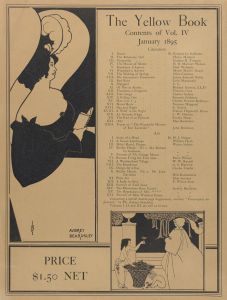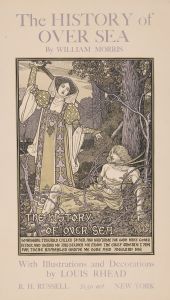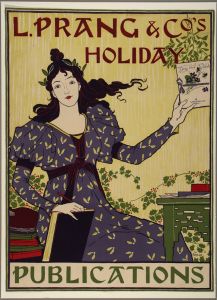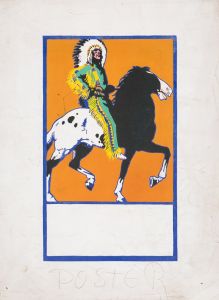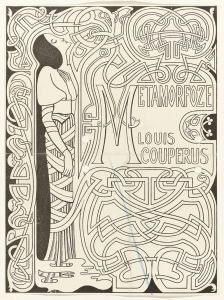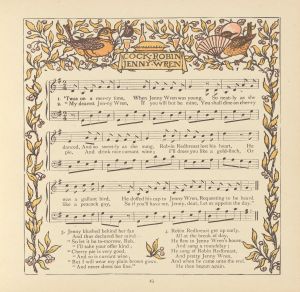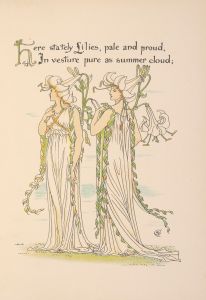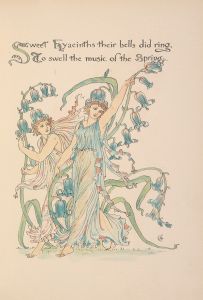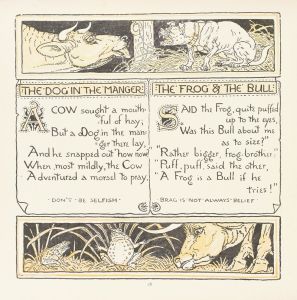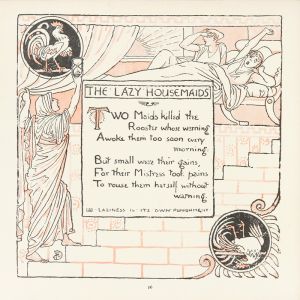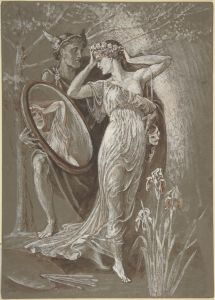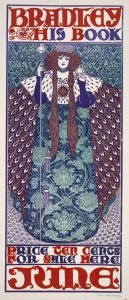
The baby’s opera – Title page
A hand-painted replica of Walter Crane’s masterpiece The baby’s opera – Title page, meticulously crafted by professional artists to capture the true essence of the original. Each piece is created with museum-quality canvas and rare mineral pigments, carefully painted by experienced artists with delicate brushstrokes and rich, layered colors to perfectly recreate the texture of the original artwork. Unlike machine-printed reproductions, this hand-painted version brings the painting to life, infused with the artist’s emotions and skill in every stroke. Whether for personal collection or home decoration, it instantly elevates the artistic atmosphere of any space.
Walter Crane was a prominent English artist and book illustrator, known for his contributions to the development of children's book illustrations in the late 19th century. One of his notable works is the title page for "The Baby's Opera," a collection of nursery rhymes and children's songs. This work is a fine example of Crane's distinctive style, which combines elements of the Arts and Crafts Movement with a keen sense of design and color.
"The Baby's Opera" was first published in 1877 and is part of a series of children's books that Crane illustrated. The book was edited by Edmund Evans, a renowned wood engraver and printer, who played a significant role in the production of high-quality illustrated books during this period. Evans's collaboration with Crane was instrumental in bringing Crane's vibrant illustrations to life, using advanced color printing techniques that were innovative at the time.
The title page of "The Baby's Opera" exemplifies Crane's artistic approach, characterized by intricate borders, harmonious compositions, and a playful yet sophisticated use of color. Crane's illustrations often featured detailed floral motifs and stylized figures, reflecting his interest in medieval art and his commitment to the principles of the Arts and Crafts Movement, which emphasized craftsmanship and the beauty of handmade objects.
Crane's work on "The Baby's Opera" and other children's books was influential in shaping the visual language of children's literature. His ability to create engaging and visually appealing illustrations helped to elevate the status of children's books, making them cherished by both young readers and adults. The title page of "The Baby's Opera" is a testament to Crane's skill in creating images that are both decorative and narrative, capturing the essence of the songs and rhymes contained within the book.
In addition to his work as an illustrator, Walter Crane was also an accomplished painter and designer. He was deeply involved in the Arts and Crafts Movement, working alongside figures such as William Morris to promote the integration of art into everyday life. Crane's commitment to social and artistic reform is evident in his work, which often sought to make art accessible and enjoyable for a wide audience.
"The Baby's Opera" remains a significant work in the history of children's literature, not only for its content but also for its artistic merit. Crane's illustrations continue to be appreciated for their beauty and craftsmanship, and they serve as an enduring example of the potential for art to enrich the experience of reading. Through his work on this and other projects, Walter Crane left a lasting legacy that continues to influence illustrators and designers to this day.





